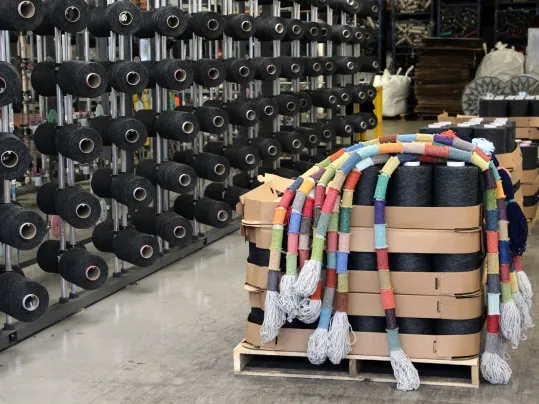Meet The Maker: Anna Ray
Festival of Making, Blackburn
September 2019
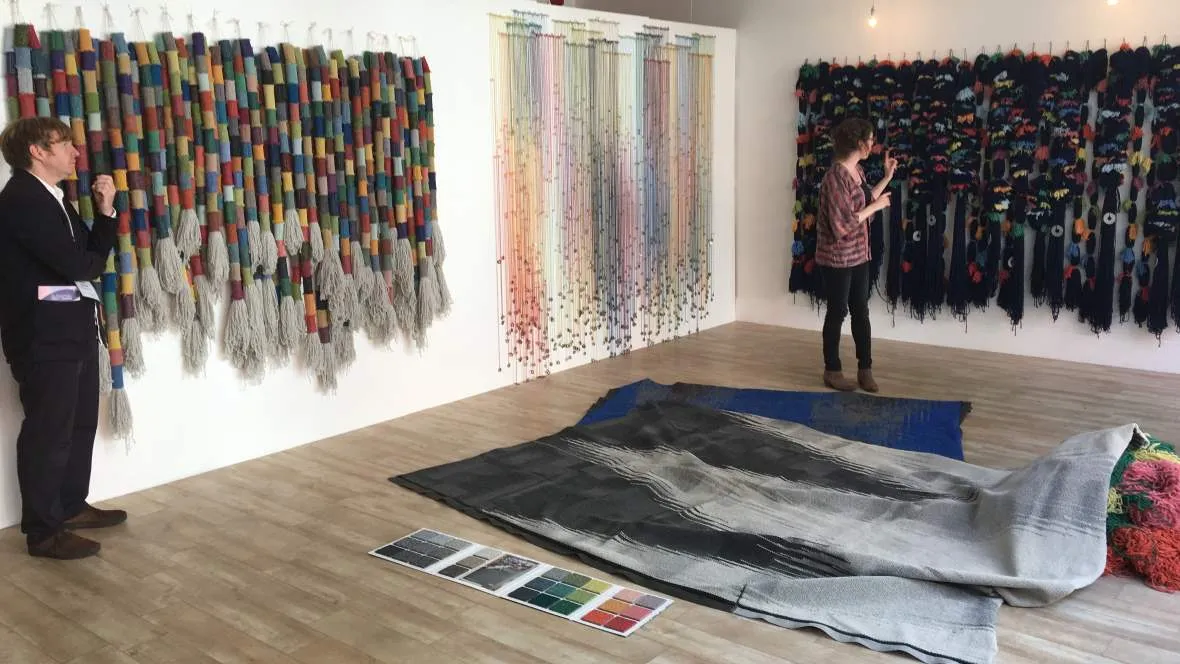
Earlier this year, renowned textile artist, Anna Ray, took up a three-month residency at our Bamber Bridge factory, creating artworks inspired by the colours and yarns used in our carpet tiles, before premiering her creations at this year’s National Festival of Making in Blackburn, Lancashire. Here, we catch up with Anna to find out more about her experiences.
Anna Ray studied BA (Hons) and MFA Tapestry at Edinburgh College of Art (1994-1999), before she became a Lecturer in the department soon after graduation, where she taught for six years before relocating to London. Her work has been exhibited nationally and internationally over the last twenty years in both applied art and fine art contexts and she has gone on to receive major honours for her work including the Scottish Arts Council Crafts Creative Development Award, Scottish Arts Council Assistance Grant to an Individual Artist, The Hope Scott Trust Award and Edinburgh Visual Arts and Crafts Award.
Anna (left) is shown here with Janet Lowe, Forbo's Head of Marketing UK and Ireland
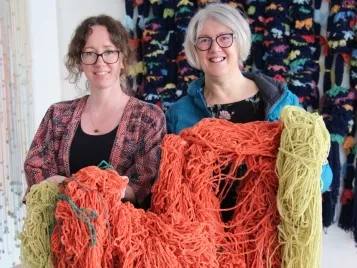
Why did you decide to get involved in the Festival of Making?
The Festival of Making provided me with the opportunity to work with a large-scale textile manufacturer. While I didn’t know, when I applied for the festival, who I would be partnered with, it was brilliant to be teamed up with Forbo, and spend time at its carpet tile file factory in Bamber Bridge; it allowed me to be really ambitious with my work and to take on the challenge of working with brand new materials, in a totally new context.
How do you develop your ideas?
The journey I take when I’m creating any new artwork is that I play and experiment in the studio. It’s important for me to really familiarise myself with the materials that I am working with, developing an understanding of what they can do and how they behave under different actions. For example, what happens when the fabric is cut? What happens if the yarn is wrapped around fabric? Experimenting and working freely with my hands allows me to find this out.

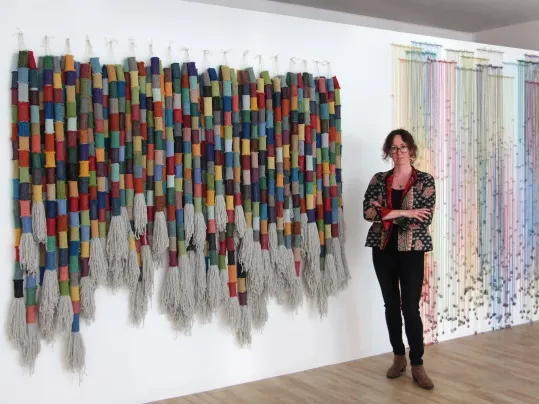
Can you tell us about your artwork, which you created for the Festival of Making?
I created a series of new artworks called Offcut and within the collection there are references to the materials, forms and machinery that I discovered during my time at the Forbo factory.
The first piece was called Offcut-Tuft, which was created using Tessera Chroma yarn as a base for the piece. I produced carpet beads from leftover materials at the factory, as well as some new materials that were created for me. The top cloth was produced on a smaller sample tuft machine at the factory, which is used to test out colourways when the designers create new collections.
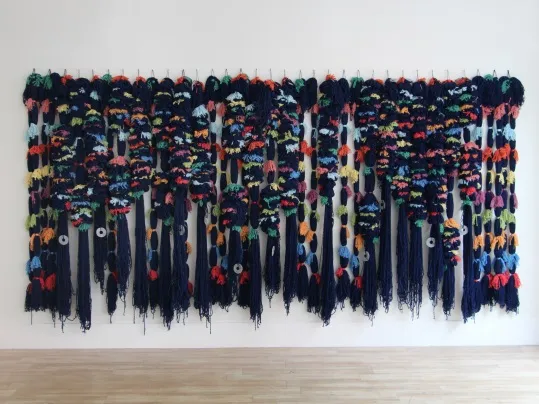
Offcut-Cord uses the palette of uplifting hues from the Tessera Chroma range. It was also part inspired by my Huguenot ancestors. This piece uses the process of gathering the yarn, so I created these long strands, using the highly coloured yarn from Forbo’s Tessera Chroma range. The result is a vibrant, celebratory piece of work.
The third piece, Offcut-Ends, was inspired by the systematic, linear arrangement of threads in the changeover and tufting process. Changeover in the Forbo factory is when threads are heat sealed together to tuft continuously from one colour to the next, to produce different coloured top cloths. It was a lovely process to witness as the arrangement of lined up threads, one colour next to another, created hanging, curved forms.
The final work in the Offcut series, Offcut-Sample, was created with the help of one of the skilled production operatives at Forbo, using some of the brightly coloured materials that were left over from my making process. I wrapped the Offcut around cones from some of the yarn and stitched them together. The changeover from one colour to the next is visible in the staggered lines as each colour meets.
How did you find the challenge and experience?
I was delighted by the challenge of working with a specific material. I was introduced to a completely new technique, in terms of tufting in this way, and it gave me something different to think about. There are little echoes between the works which I’ve created, where I’ve tried to make sense of what I’ve experienced in the factory and reflect it back in my work in a simple way. I think that it’s always interesting to see the audience’s reaction so it was great to be able to stand back and watch the visitors at the Festival of Making go up to the artworks, talk to each other about them and have a curiosity about what’s in front of them.
